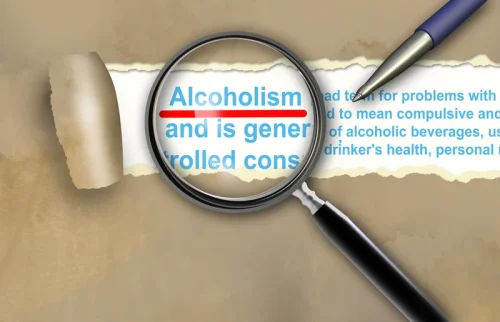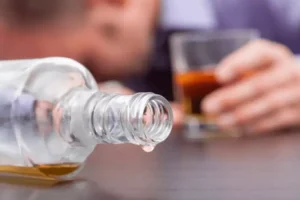
Oxycodone-induced receptor activation leads to activation of multiple intracellular signaling cascades that may account for its distinct pharmacodynamics (Fig. 3). Because of how opioid agonists have unique effects on dopamine neurotransmission within the reward system, we can surmise that different opioid agonists will elicit various strengths of incentive salience. Thus, the differences in engagement of the mesolimbic dopaminergic circuits could elicit diverse effects on incentive salience or motivation and potentially analgesic mechanisms (Ma et al. 2012). These arguments favor oxycodone’s higher abuse liability, despite similar reinforcing profile between oxycodone and other opioid agonists in the drug-discrimination studies.
Oxycodone Addiction: Signs, Effects, and Treatment

Be sure to drink enough water with each tablet to swallow it completely. After detox, patients may participate in several types of therapy, such as cognitive behavioral therapy, contingency management or motivational interviewing. Therapy helps patients understand what causes addiction, how to prevent relapse, how to recover from relapse and how to find motivation to live without substances of abuse. When prescribed by a doctor and used as directed, oxycodone side effects are usually mild.
Prescription OxyContin Abuse Among Patients Entering Addiction Treatment

But the heartbreaking surge in accidental, fatal overdose deaths tells a much more complex story. Public health officials, harm reduction activists and concerned citizens across the U.S. are working to secure safer injection sites where people can use drugs in the presence of medical staff. Such sites facilitate the prevention of fatal overdose by assuring an adequate and timely medical response and open a pathway for further health care and addiction-related treatment. In response to the pandemic’s strains on inpatient care facilities, take-home methadone availability was expanded in new ways – a change that some treatment experts hope will be permanent. Yet research shows that addiction is a recurring brain disease, and relapse is highly likely.
Coming-of-age among opioids

Many people who abuse oxycodone start out by taking a prescribed amount — but as their body develops a tolerance to the drug, they need a higher dose to maintain the same relief or high. You can also learn more about the side effects and risks of opioid use disorders, including the signs of intoxication and overdose. If you think you or a loved one has an oxycodone addiction, speak with a healthcare provider. They can answer any questions, perform a physical examination if necessary, and refer you to a treatment center. Read on to learn the signs and symptoms of oxycodone addiction and how to get help for a loved one or yourself.
- Purdue Pharma did not participate in the analyses, interpretation, or writing of this article, nor did they limit the use of data for publications or presentations.
- Tell the doctor right away if your baby develops unusual sleepiness, difficulty feeding, or trouble breathing.
- Avoid eating grapefruit or drinking grapefruit juice while using this medication unless your doctor or pharmacist says you may do so safely.
- The best way to get through withdrawal from oxycodone and reduce the chances of relapse is with therapy, support groups and medication.
- Accessibility to receptors in different brain regions and with different outcome functions, such as analgesia and reward, can be influenced by blood brain barrier permeability and P-Glycoprotein (drug efflux pump) interactions.
- OxyContin was released in 1996 and mass-marketed as a revolutionary intervention in the medical treatment of pain.
What oxycodone does to your brain and body
Oxycodone is a powerful drug and offers much-needed relief to many people struggling with painful or terminal conditions; as such, it can be hard to stay in control. If your body is used to the effects of oxycodone, reducing how addictive is oxycontin or limiting its consumption may cause you to experience withdrawal symptoms. For some people, the fact that opioids come from a medical doctor’s office with a prescription may make them think they’re safer to use.
Oxycodone Addiction
- The morphine tablet, Kadian, manufactured by Actavis, is designed to be taken once a day, but the label states that some patients may need a dose every 12 hours.
- Sealed evidence would be laid out in public for class-action attorneys, government investigators, doctors and journalists to see.
- These results also suggest that those who suffer from OxyContin abuse or dependence share many characteristics with those who are dependent on other classes of drugs.
- Drug-checking programs allow people to inspect the contents of their drugs for fentanyl at home with a simple test strip.
Alcohol and benzodiazepines are 2 of the most dangerous substances to combine with oxycodone. Because oxycodone, alcohol, and benzos all depress the central nervous system (CNS), mixing them can be extremely damaging and potentially fatal. This deadly cocktail can slow down breathing and cardiac function to the point of complete failure. Even if the combination doesn’t cause death, it can cause irreversible damage to the brain and other major organs.
How Long Does Oxycodone Withdrawal Last?
The Connecticut attorney general had complained to the FDA that doctors prescribing OxyContin every eight hours, rather than the recommended 12, were unintentionally fueling black market use of the drug. After some physicians began prescribing OxyContin more frequently than every 12 hours, Purdue summoned its sales force to special seminars. As this 2001 presentation shows, company officials were concerned more frequent dosing would hurt business.

What are the signs of OxyContin (oxycodone) addiction?

Most people who use drugs do so in a sporadic way that features bouts of controlled and uncontrolled use as well as sobriety. It is also well documented that fear of arrest and shame encourages people to hide their drug use in ways that increase their risk of a fatal overdose. This is because when people use alone, there is no one there to call 911 or perform CPR should an overdose occur. A separate study underwritten by a Purdue competitor, Janssen Pharmaceutica, reached a similar conclusion. Researchers surveyed chronic pain patients treated with OxyContin and reported that less than 2% said the drug lasted 12 hours and nearly 85% said it wore off before eight, according to a 2003 journal article detailing the research. In the training materials reviewed by The Times, little was said about the effect of higher doses on patient health.
- Since many who abuse oxycodone simply swallow a pill without the use of any paraphernalia, it’s easy for someone to conceal their abuse.
- Here we have highlighted potential mechanisms making it more efficacious in coupling to various signaling cascades recruited to produce their cellular effects.
- Na+ has been reported to inhibit agonist binding by 65% for the MOR and the DOR and only 20% for the KOR (Blume 1978; Werling et al. 1986).
- Kathryn Serkes, director of policy and public affairs for the Association of American Physicians & Surgeons (AAPS) in Tucson, Ariz., agrees.
What’s the Difference Between OxyContin and Oxycodone?
A Purdue sales rep persuaded him to switch Bodie to a higher dose every 12 hours, according to a judge’s summary of the evidence. A West Virginia supervisor told one of his highest performing sales reps in a 1999 letter that she could “blow the lid off” her sales and earn a trip to Hawaii if she persuaded more doctors to write larger doses. The Times asked the FDA for comment on the drug’s failure to provide 12 hours of relief for many patients. Even so, more than a third of the women given OxyContin started complaining about pain in the first eight hours and about half required more medication before the 12-hour mark, according to an FDA analysis of the study. The company’s owners were the Sacklers, a New York family of physicians and philanthropists who bought Purdue in 1952.
